This page is dedicated to us supporting you with your frequently asked questions. Topics such as products, technology, sustainability and our services will be frequently added to ensure we leave no stone unturned.
Low-cost, single-life tires may offer a cheaper option at purchase, but they are not always suitable for retreading and therefore cost more to scrap and replace. Premium tires, such as those manufactured by Continental are designed and built with the ability to be retreaded in the future. For us, retreads are an important part of our commercial vehicle offering.
As well as being a more environmentally sound option, a correctly used retread is more cost-effective in the long term – answering both customer purchase drivers. For example, a retread costs around 70-75% of the price of a brand-new tire, offering excellent value for money and significantly reducing running costs in a competitive market.

A retreaded tire saves 80% of the materials required to manufacture a new tire, therefore significantly reducing the impact on the environment. This means we are able to save 65 lbs. of rubber compound, up to 44 lbs. of steel and 130 lbs. of CO2 on every retread tire we produce compared to a new tire.
In addition, retreading tires reduces scrapping, exportation and incineration of worn-out tires which, over the course of a year, can release over 160,000 tons of CO2 into the air.
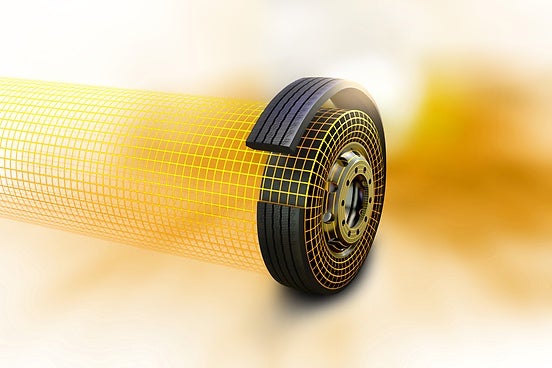
Regulations to reduce CO2 emission levels and the need for more fuel-efficient tires will continue to be the largest demand driver both from vehicle manufacturers, and major fleets. This requirement has to be managed in conjunction with tire wear performance, which poses a key target conflict area.
We will not only continue to innovate our development of compound technologies and tire design but will continue to provide our customers with the option of “Intelligent” tires which feature built-in sensors to monitor tire pressure and temperature. The truth remains that even a tire with the latest in cutting edge technology will not perform to its full potential if inflation pressure is not maintained correctly.

As CO2 reductions rightly join efficiency and durability as key tire choice consideration for fleets, which will drive greater complexity in tire selection within a truck fleet. For example, a fleet who operates mostly on long-haul highways will have very different requirements to a fleet who completes shorter regional routes or operates on rough terrain.
For us, detailed customer consultation is the key to both understanding a fleet’s needs and providing the correct or most suitable tire to match these needs. Only with full analysis of vehicle and tire application and use, will optimal tire selection and hence the most cost effective tire management programm be achievable.
Underinflation significantly affects rolling resistance, increasing both fuel consumption and carbon emissions, as well as intensifying tire wear and even reducing a tire's service life – all of which adversely affect operating costs.

The use of tire pressure monitoring systems (TPMS), such as ContiConnect™ Solutions, minimises these issues, by ensuring that each tire is operating at the correct pressure and temperature. Such systems work best when a sensor is placed within the tire itself, transmitting visible and audible warnings to a display in the cab, and alerting drivers to potential problems. ContiConnect™ Solutions can also alert office-based fleet support staff to any problems which occur. Warnings provided from such accurate TPMS systems not only help avoid dangerous tire blowouts, but also help prevent costly vehicle downtime, keeping the trucks on the road.
But safety warning is only one benefit of a TPMS system. Tires are directly responsible for 5% of the total operating costs but have an influence over a huge 40% of overall costs because of the effect tire rolling resistance has on fuel use, and subsequent maintenance costs. Simply put, tires which are operating at the correct pressure, maximise fleet efficiency and save money. What is more, the added advantage of tires which run efficiently is that fuel consumption is lowered, and tire wear is reduced - both of which ensure CO2 emissions are cut, to help protect the environment.
We have a wide array of ContiConnect™ digital solutions available, and we work closely with each operator to ensure the right system is in place to meet their particular requirements.
Each solution starts with ContiConnect™ tire pressure sensors, which are mounted onto the tire’s inner liner. These sensors transmit real-time tire pressure and temperature data, and depending on the system chosen, this data can be sent directly to a display in the driver’s cab, can be captured as vehicles return to base by the Yard solution or if a fleet needs remote tire pressure monitoring, the sensors also connect to ContiConnect™ Live - a central web portal accessed by fleet managers.
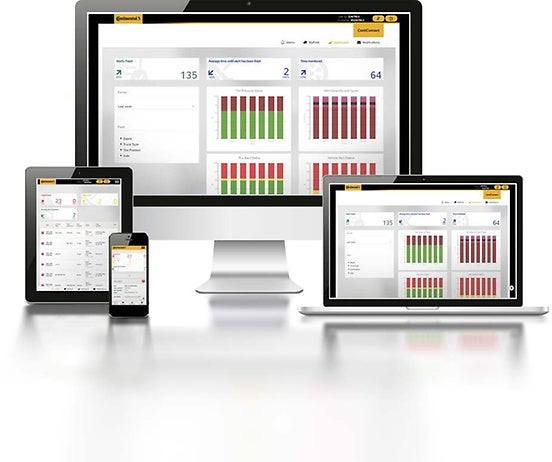
ContiConnect™ Live is able to monitor the tire pressure of multiple vehicles, regardless of their location, while they are on the road, whereas ContiConnect™ Yard, measures tire pressure on multiple vehicles which regularly enter a yard, noting the date and time as the vehicle passes a dedicated fixed check-point, and reporting the status of each tire to the web portal.
Tire data can also be captured with our hand-held tool, which allows drivers or fleet managers to manually upload information and share to the ContiConnect™ web portal. This entry level manual solution is useful where live tracking is not required, for vehicles which do not frequently return to a dedicated checkpoint, or for instances when vehicles are not in range of ContiConnect Yard. The hand-held tool provides a quick and easy alternative to using a gauge to measure tire pressure. Users simply scan the sensor from the side of the tire, without any need to remove valve caps, measure, read pressure and replace the cap.
ContiConnect™ is completely scalable depending on requirement, and we work closely with customers to understand how they wish to monitor tire pressure, in order to provide the best solution to meet this need. Tire sensor notifications are also customisable depending on which data a fleet manager needs to see, and how frequently, if not in real time. The system can also manage data from multiple vehicles, to help fleet managers who may wish to switch from less flexible manual service planning, to a more targeted proactive maintenance plan. Such predictive tire management helps fleets reduce costs associated with unplanned tire maintenance and helps safeguard the fleet’s safety.
In recent years there has been a steady increase in the popularity of TPMS systems on tractor-unit tires, as fleet operators begin to understand the increased efficiency they bring, but traditionally accessing this data on trailer tires has proven to be trickier, although no-less important.
We are the first to offer a standalone TPMS system for trailers. The newly launched system is the first of its kind available and is designed to work both as a standalone trailer tire monitoring package, or fully integrated into an existing truck TPMS system, as proven during a joint initiative with Mercedes-Benz Trucks which resulted in the system now being embedded into the Truck App portal on the new Actros.
The technology shows the tire pressures of the trailer tires in real time on a display mounted on the bulkhead. The driver is also warned of any issues while driving via an LED warning light system which is visible via the driver mirrors.
Plus we also offer their own driver app for Android phones which provides constant real time tire pressure and temperature information to the driver via a dongle integrated within the trailer system.
The Continental-designed system is highly adaptable, and can be used with any trailer configuration, including multideck trailers, giving even better visibility of trailer tire pressures to drivers and fleet managers.
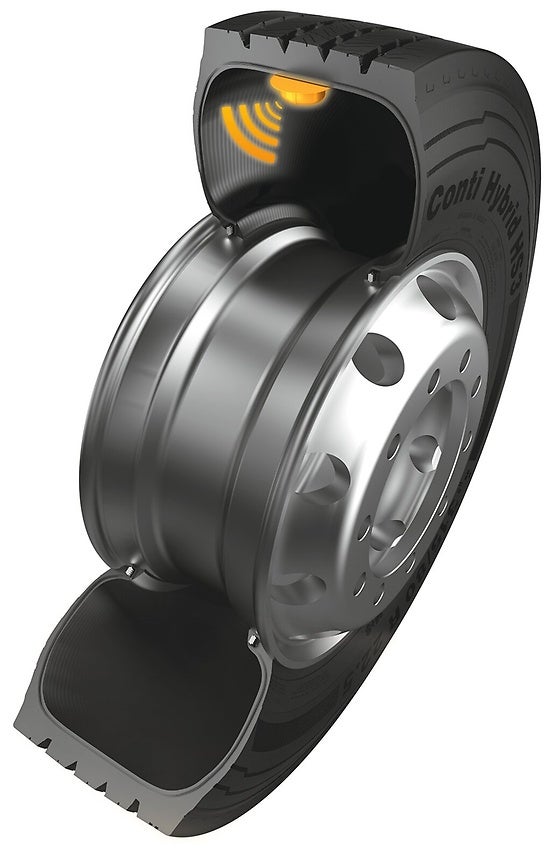
We continue to innovate to provide customers with the tire pressure monitoring they need to really drive efficiency. Today’s tires include pressure and temperature sensors, but the tires of tomorrow will be even more ‘intelligent’, with technology to monitor tread depth and tire age data, for example.
The truth remains that even a tire with the latest in cutting-edge technology will not perform to its full potential if inflation pressure is not maintained correctly. Accurate measurement and maintenance of tire pressure, via intelligent systems such as ContiConnect™ Solutions will always hold the key to efficient, sustainable and safe fleet operations.
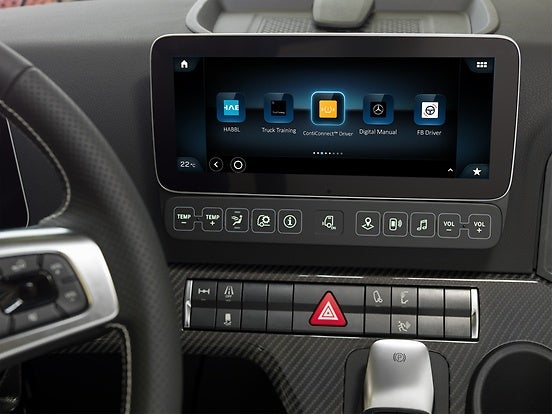
Tire choice is all about give-and-take when it comes to desired performance, including wet grip, durability and rolling resistance. Balancing many of these performance requirements is a constant challenge. The key development focus areas are defined based on the fundamental requirements in the specific targeted application area for the tire. The technical, highly sophisticated rubber compounds in modern premium tires today contain silica, enabling priority to be assigned to suit many seemingly differing needs.
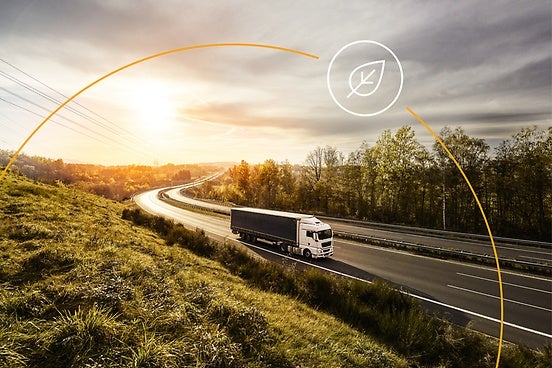
Our tire compounds are highly complex and may contain in the tread area three or four different specifications to try and bridge some of these performance conflicts. A typical example of this is known as cap and base technology, where the top compound, which is in contact with the road surface, will be designed to absorb energy to optimize the tire's traction in both dry and wet conditions. The compound below this, known as the base, is designed to release energy effectively to optimize rolling resistance, which will contribute to improving fuel consumption and higher removal mileage.
A tire specifically developed to reduce rolling resistance and lower CO2 levels used to negatively imapct overall mileage. The challenge is to ensure consumption benefits from energy efficient tires are not compromised by a higher tire replacement factor. From a tire development point of view, this is achieved by continuously enhancing rubber compound technology with advanced tread geometry.
For example, the Conti EcoPlus HS3+ steer tire feature a “Plus Volume” pattern design, where tread material is added in areas with low deformation and high contribution to mileage. This results in higher mileage and lower fuel consumption. For the drive axle, the HDR2 Eco Plus features larger block widths to reduce tread deformation with less heat generation for reduced fuel consumption, with an additional sipe pattern to keep traction high.

A recent European study attributed roughly 25% of overall CO2 emissions to road transportation including trucks and buses. To combat this, new CO2 reduction targets have been set, stating commercial vehicles must reduce CO2 output by 15% by 2025 and by 30% by 2030.
The challenge for tire manufacturers is to continuously research and develop new tire technologies that balance durability and rolling resistance to ensure that fuel economy benefits from energy efficient tires is not compromised by a higher tire replacement factor. Greater complexity in tire selection within a truck fleet is becoming more apparent in light of these targets, with greater importance on understanding which variant works best within a specific fleet application. We highly recommend consulting with our skilled sales personnel before selecting tires to ensure you're selecting the best tire for whatever job you need done.
